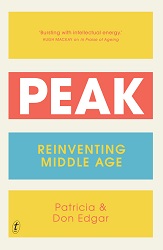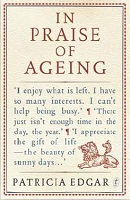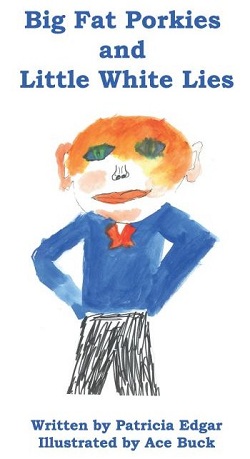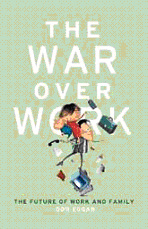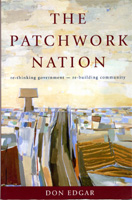When I'm 65...
The Australian Bureau of Statistics defines anyone over 65 as
“old”. You don’t qualify for the means tested “old age
pension” for two more years, and when politicians talk of ageing, they
focus on nursing homes and care, dementia and falls. Ageing policy is confused
and confusing.
Most people will have 20-30 more years of active life in paid work or
contributing in multiple ways to family and community well-being after being
defined as “old”. So, we need to plan how those years can be
facilitated and structured, to harness the economic and social resource older
people offer. Knowledge of family life is central to such policy formation.
A longer life expectancy (now 82 for males and 83.8 for females) results
from lower infant mortality, better living conditions and improvements in
health. It obviously varies by socio-economic status, exposure to dangerous
working conditions and access to preventive healthcare. (Life expectancy for
First Nations people is 71.9 years for males, 75.6 for females; for manual
workers and the non-skilled it is five years less than the average). But for
everyone, a longer life expectancy affects the nature of family life.
Family formation patterns have changed dramatically since the early
1980s. Australian Institute of Family Studies research identified a shift
towards more adult offspring delaying marriage and staying longer in the
parental home; the figures have continued to grow, with 54% of men and 47% of
women aged 18-29 still living with parents. This is not just because there is
difficulty in buying their own home; it also reflects a shift in attitudes to
marriage and having children.
Women’s career concerns and a resistance to being a housewife and
mother clash with the fact that it takes two incomes to buy a home. Sexual
mores have changed so that young adults can carry on a
“relationship” without fear of pregnancy or social disapproval,
often within the parental home. Older parents are now living with older
offspring and accommodations (both financial and emotional) must be made.
The nature of parenting has changed. Parents are becoming friends rather
than mentors, reluctant to push children out of the nest. There is a
disinclination to guide children, condemn wayward behaviour or demand reciprocal
responsibility and contributions to family finances. Young people are more
reluctant to settle and become a parent in an uncertain world, feeding into
delay and thus altering the direction of the life course.
Grandparenting has also changed radically. The
popular media notion that all Baby Boomers are living high on the hog and
denying younger generations the chance to settle in their own family home must
be challenged. Home ownership is higher for the Boomers — 82% at 70-74;
36% at 25-20 — because of inflated house prices: housing represents some
53% of the nation’s wealth. Homeowners will pass on to their offspring
the biggest ever intergenerational transfer ($5.4 billion) when they die. But
increased capital in a house does not translate into living a life of luxury
for many Boomers, and an increasing number of families are cohabiting or
relying on intergenerational support.
Where and how to live has complicated family life. Children living at
home longer, even partnering and having their offspring within the family home,
involves disruption and adaption for all. Grandparents become child carers, and
the Baby Boomer generation has become the “sandwich generation”
with many looking after their children and ageing parents.
Many grandparents have taken on childcare, filling the gap of childcare
provision, but the assumption they will fall into line is under challenge as
many older parents want or need to stay in the workforce longer themselves.
Others don’t want to go through the exhausting child-rearing stage yet
again, especially as child-rearing practices have become more onerous and
intensive.
Nearly half of all divorces (78,000 in 2021) are of couples with
children and a whole new category of “grandparent families” was
recorded in the 2021 Census. About 27% of these comprise a single grandparent
looking after grandchildren full-time; 16.4% are a couple with that
responsibility. Others can be excluded from contacting their grandchildren
because of custody and access disputes with their offspring’s partner
which can leave a divorcing couple without grandparental support. There are
also now more same-sex marriages and when they divorce (more female couples do
than male), the issue of aged care becomes a new problem. Then there are
singles.
Overall, these changing circumstances, along with an extended life
expectancy, results in the growing phenomenon of more complex, extended
multi-generational families than ever before in our history.
All governments need better information about family life than they have
at present so policies about family support, generally, can work as a coherent
social package at every stage of the age spectrum – childcare, care by
children of parents, age care and care of an older partner by another (a
growing, unacknowledged group today). The concept of “support” for
ongoing family life should include better provision of housing for the young,
better advice on parenting and support for young parents, more direct financial
support for the sandwich generation carrying the load of intergenerational work
and for the diversity of older people’s lives.
Value change is difficult when structural conditions are resistant, and
policy drivers lack the data to enable reform. A more family-oriented approach
to policies and programs should help counter the damaging trend towards
individualism, isolation, and despair in our fragmenting society. Care of
frailty is not the only focus of support required for those 65 and over. A
realistic picture of family life, as it has transformed, must be the basis of
planning for a stable society to function.



